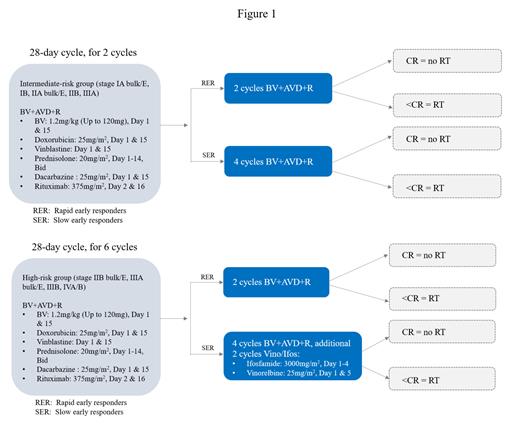Introduction
Classical Hodgkin lymphoma (cHL) accounts for about 4.8% of childhood malignant neoplasm, and the incidence of cHL in Chinese children and adolescents (0-19 years old) is about 1.78/million, which is a group of relatively low malignancy and curable tumor. With the prolonged survival of children and adolescents with cHL, the incidence of muscle and skeletal malformations, lung and cardiovascular diseases, infertility and secondary tumors increased significantly during long-term follow-up. Therefore, the goal of childhood cHL treatment is to achieve and maintain the high efficacy while reduce the treatment-related complications. Brentuximab vedotin (BV), an antibody-drug conjugates (ADC) targeting CD30, has been evaluated well in American children and some regions, but no clinical studies to explore the efficacy and safety of BV in Chinese children with cHL. Therefore, the objective of our study is to evaluate the efficacy (objective response rate, including CR and PR) and safety (short - and long-term safety) of modified BV-AVD-R regimen (Brentuximab vedotin + Rituximab + Doxorubicin + Vinblastine + Dacarbazine) in Chinese children with previously untreated intermediate- and high-risk classical HL.
Methods
This study is a prospective study with period from October 2022 to December 2024, and planned to enroll 44 children with newly diagnosed intermediate- and high-risk classical HL. All patients will undergo PET/CT at the time of initial diagnosis and after 2 cycles of modified BV+R+AVD regimen to determine early response. Rapid early responders (RER) defined as CR after 2 cycles of therapy. Slow early responders (SER) defined as no CR (partial response (PR) or stable disease) after 2 cycles of therapy. Intermediate-risk patients were stage IA bulk/E, IB, IIA bulk/E, IIB, and IIIA. High-risk patients were stage IIB bulk/E, IIIA bulk/E, IIIB, and IVA/B(Figure 1).
The primary endpoints include ORR (CR+PR) and adverse events. The secondary endpoints include progression-free survival (PFS), event-free survival (EFS) and overall survival (OS) at 6 months and 1 year.
Results
From October 2022 to July 2023, a total of 14 children with newly diagnosed classical HL were enrolled, and 12 patients who had completed at least 2 cycles treatment were eligible for evaluation. 9 boys and 3 girls were enrolled, with median age of 10 years (range 7-15 years).
Risk group: 9 patients in high-risk group, 3 patients in intermediate-risk group; Clinical stage: 5 patients in stage IIIA, 2 patients in stage IIIB, 4 patients in stage IVA, and 1 patient in stage IVB. Pathologic subtype: 7 patients of nodular sclerosis type and 5 patients of mixed cell type.
Treatment: A total of 33 cycles of modified BV+R+AVD regimen were completed, with 66 doses of BV. The median number of treatment cycles was 3 cycles (range 2-6). 11 patients achieved CR and 1 patient achieved PR after 2 cycles, and the ORR was 100% (12/12). As of July 28, 2023, 4 children had stopped follow-up and achieved CR without sequential radiotherapy.
The median follow-up was 6 months (range 2-10). 12 patients successfully received and completed BV infusions, mild nausea and vomiting (10/12), alopecia (9/12) and sensory abnormalities (3/12) were observed. Serious adverse events were mainly grade ≥3 blood cell abnormalities (10/12), none of which had an impact on the treatment flow. No patient withdrew from the study, indicating good adherence to the regimen.
Conclusion
The risk-adapted modified BV+R+AVD regimen for newly diagnosed Chinese children and adolescents with classical HL showed favorable treatment outcomes with good early response rate and sustained response rate. The regimen could also reduce sequential radiotherapy and demonstrated well safety and tolerability. The study is still ongoing.
OffLabel Disclosure:
No relevant conflicts of interest to declare.
Drug: Brentuximab Purpose:Children hodgkin lymphoma


This feature is available to Subscribers Only
Sign In or Create an Account Close Modal